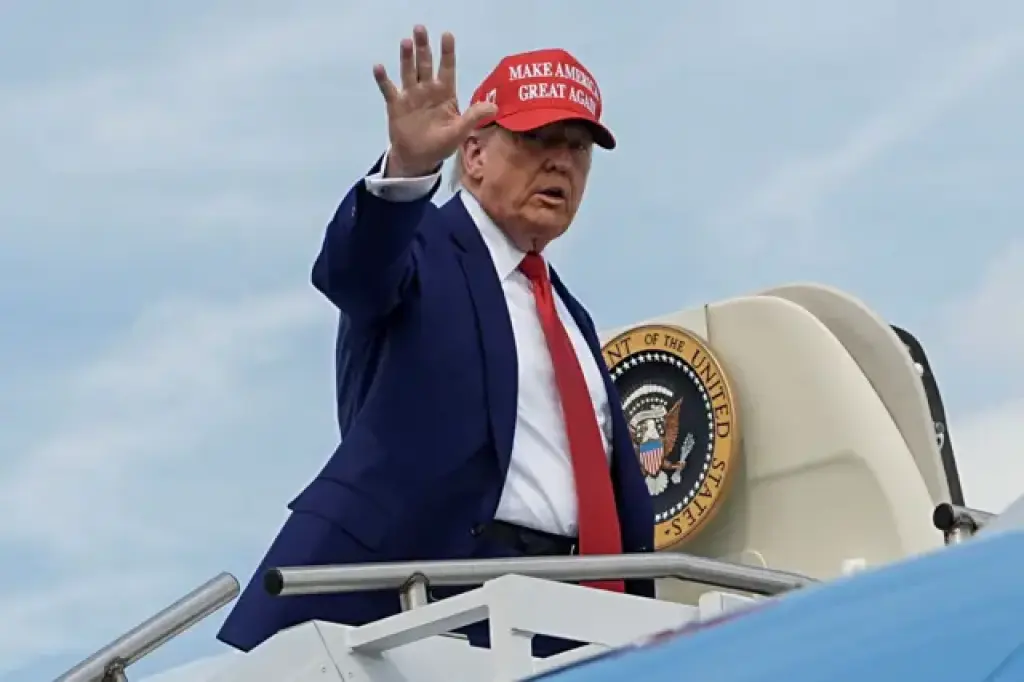On Saturday night (21), former US President Donald Trump confirmed that the country had launched airstrikes against three nuclear facilities in Iran: Fordo, Natanz and Isfahan. The announcement comes amid the military escalation between Iran and Israel, rekindling fears of a conflict of global proportions.
In a message published on the Truth Social network, Trump declared:
“We have very successfully concluded our strike on the three nuclear sites in Iran. All aircraft are now out of Iranian airspace.”
✈️ The attack: strategic targets and cutting-edge technology
According to Trump, the attack involved a “full load of bombs” dropped on the Fordo complex, one of Iran’s most protected nuclear facilities. The operation was reportedly carried out with B-2 Spirit stealth bombers, previously sent to the Guam base in the Pacific. These aircraft are capable of carrying specialized weaponry to penetrate underground structures, such as those in Iran.
The offensive targeted three key points:
Fordo: a uranium enrichment center located on a mountain near the holy city of Qom.
Natanz: a strategic nuclear base, previously the target of cyberattacks and mysterious explosions.
Isfahan: an Iranian military-industrial hub, known for its drone and ballistic missile factories.
🇮🇷 Iran's reaction: acknowledgement and confrontational rhetoric
Iranian authorities acknowledged the bombings. Morteza Heydari, from the crisis management department of Qom province, confirmed damage in Fordo. In Isfahan and Natanz, explosions were also reported by local authorities.
Iranian state media said that Israeli drones were detected and neutralized in the south of the country, and that air defenses were activated in several areas. Israel, for its part, claimed to have eliminated three senior Iranian commanders in recent days, including those linked to the October 7 attacks.
Iran's Deputy Foreign Minister Saeed Khatibzadeh warned in an interview with the BBC that a direct US entry into the conflict would turn the Middle East into “hell”.
💣 Nuclear complexes: what's in Fordo, Natanz and Isfahan?
🧪 Fordo
Hidden under a mountain, Fordo is one of Iran's most fortified facilities. Parts of the complex are believed to be more than 800 meters underground, making conventional attacks difficult. There, state-of-the-art centrifuges enrich uranium — a process that can be used for both peaceful purposes and the production of nuclear weapons.
⚙️ Natanz
A constant target of sabotage, Natanz is the country's largest uranium enrichment complex. Analysts say the underground structures are about 20 meters below the surface, which still requires advanced military technology to be accurately targeted.
🛰️ Isfahan
A major industrial hub, Isfahan is home to drone and ballistic missile factories. The city has been the target of previous attacks, such as in 2023, when Iran accused Israel of using drones to target a munitions factory.
📜 Iran's nuclear program: between agreements and violations
Iran has always maintained that its nuclear program is for peaceful purposes. However, investigations by the International Atomic Energy Agency (IAEA) have revealed suspicious activities in the past, especially between the 1980s and 2000s.
In 2015, the country signed an agreement with world powers, limiting its uranium enrichment in exchange for relief from economic sanctions. But in 2018, Trump abandoned the pact and imposed new sanctions. Since then, Iran has been progressively violating the terms, increasing the purity level of uranium and reactivating structures such as Fordo.
In 2021, the country announced the use of sixth-generation centrifuges, which are faster and more efficient, rekindling fears that it is approaching the capacity to produce a nuclear weapon.
⚠️ Dangerous escalation: what could happen now?
The declared entry of the US into the conflict between Iran and Israel marks a new stage in the crisis. Experts assess that the American offensive, although punctual, could open the way for a chain reaction:
Risk of a direct response from Iran, possibly against US bases in the region.
Increased pressure on European allies, who are trying to broker a diplomatic solution.
Possibility of cyberattacks and sabotage, as has happened in previous years.
Mobilization of pro-Iran groups in Lebanon, Syria and Yemen, which could expand the theater of operations.
🛑 Israel on full alert
Following the US bombings, the Israel Defense Forces have raised the alert level across the country. The instructions include:
Suspension of school activities;
Prohibition of gatherings;
Restrictions on the operation of businesses, except for essential ones.
🧭 Conclusion: A point of no return?
The scenario in the Middle East is becoming increasingly unpredictable. With cross-border attacks, inflammatory rhetoric and the direct entry of major military powers, the risk of an escalation into a regional — or even global — conflict increases exponentially.
It is not yet clear whether the bombings were isolated or part of a broader military campaign. The world is watching with apprehension what next moves Washington, Tehran and Tel Aviv will make.
 Português
Português








